
The sublime of Miyazaki: how the movies of Studio Ghibli give us a feeling of sublimity
The animation movies of the Japanese filmcompany Studio Ghibli, are famous all over the world, especially since they became available on Netflix in 2020. With the Oscar-winning movie Spirited Away (2001), director Hayao Miyazaki has put a big mark on the animation industry. His movies show themes of violence, apocalyptic events, and spirituality. Together with the breathtakingly beautiful scenes, his formalistic approach, and the complex narratives, a sublime feeling is reached.
Who is Miyazaki and what is Studio Ghibli?
Hayao Miyazaki is a famous Japanese director, who started animating many movies for different studios in the sixties. In 1979 he left the last studio and started distributing his own movies. With the success of Nausicaä of the Valley of the Wind (1984), he could start his own animation studio Studio Ghibli, together with his friend and partner Isao Takahata. Some famous movies of the studio are My Neighbor Totoro (1986) about two young siblings who are moving to a new place; Princess Mononoke (1997) which is about a post-apocalyptic world; and Spirited Away (2001), in which a young girl must work for spirits in order to find her parents. The scenes in many movies of Miyazaki often touch sublimity Although we can find devastating natural disasters such as in Nausicaä, we also find sublimity in the beauty of the animation of the movies, for instance in My Neighbor Totoro. Napier (2005) describes Miyazaki’s style as: “characterized by a distinct creative philosophy, expressed not only through the characters or narrative, but also through Studio Ghibli’s unique style of animation.” In this paper, we take a look at how Miyazaki gives us a sublime feeling with his creative philosophy.
What is the sublime?
The sublime is defined in the Oxford Dictionary as: “An overwhelming sense of awe or other high emotion through being vast or grand.” Although the term goes back to the Roman author Longinus, who linked sublime to ‘excellence in language', in this paper we take a look at how Edmund Burke and Immanuel Kant see the sublime( cfr. Philip Shaw 2016). Sublime is the limit of reason and expression, it happens when we cannot find words for feelings and we are not able to compare it with anything else. Burke explains that whatever is obscure, such as our ideas of death or the nature of existence, is terrifying and therefore sublime. This because it cannot be represented in our minds (Shaw, 2016). In the movies of Miyazaki, we find those themes and his interpretation of these concepts.
The sublime can also be linked to the apocalyptic narratives we see in movies such as 2012 (2009) and The Day After Tomorrow (2004). Salmose (2018) wrote about how the cinematic Hollywood style, with its bombastic music, the protagonist-saving-the-world-plot, and its devastating nature, leaves us viewers speechless and overwhelmed. Salmose calls this the apocalyptic sublime, which he divides into the ‘action apocalyptic sublime’ and the ‘poetic apocalyptic sublime’. The first refers to the Hollywood-based films where the protagonist has to work inclusively through embodiment to ‘save the world,' the second refers to an ‘existential and poetic configuration, which emphasizes the more universal dimensions of catastrophe’ (Salmose, 2018, p.1419). We will find both in Miyazaki’s work.
Beauty, in his movies, is neither female nor male
Sublimity is linked to the concepts of Romanticism, “An artistic movement underlined by an explicit spiritual and philosophical ideology” (Brendan, 2020). This movement also had its influences in Japan, during the first decades of the twentieth century. Napier suggests that Miyazaki’s movies have the core values of the “textbook definition of the sublime” an illustration of Japan’s close engagement with European art and literary traditions (Napier, 2018, as cited by Brendan, 2020).
Formalism is a definition we can use in order to look at the sublime as well. The formalistic approach lets us look at a medium , artwork, or object individual characteristics. “Formalism could be considered a particularly cogent interpretation of what Kant called ‘disinterest’: purging our minds of all ‘associated ideas’ ought to allow us complete freedom to contemplate objects without preconceptions or prejudices” (Prettejohn, 2005, p. 173). When we watch Miyazaki’s movies, Western people often won’t recognize the Japanese language and/or customs that are shown in the movies. A figure as No-Face (figure 1) wouldn’t be common for Europeans and therefore can have a totally different feeling or meaning for us, then for Japanese people. With a formalistic approach, we can break down the movies of Miyazaki and try, from a Western perspective, to understand the narratives, the beauty, and the sublime evoked in his movies.
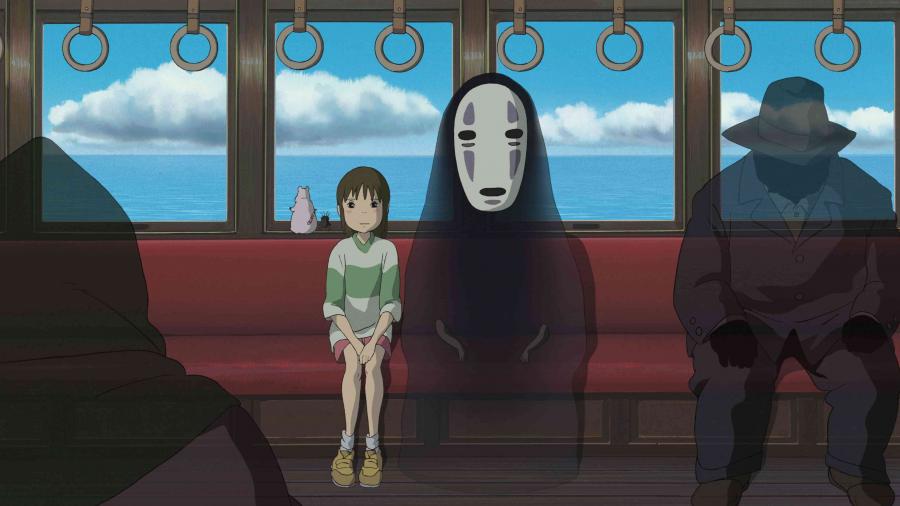
Figure 1: Screenshot of Spirited Away (2001) showing female protagonist Chihiro (left) with the spirit No-Face (right).
How are beauty and sublimity reached?
Let us have a closer look at Spirited Away (2001). In this movie a young girl, Chihiro, finds her parents being transformed into pigs by spirits. In order to change them back, Chihiro has to work for the spirits in a magical bathhouse by doing many harsh jobs. In this movie we can often find shots such as figure 1. Here, Chihiro travels with a spirit to a witch on the other side of the sea. During this scene, which is about 1:30 minutes long, there is no dialogue nor any given information on narrative development. As viewers, we can only enjoy Chihiro’s journey and thereby observe the surroundings. We see fellow passengers illustrated as black shades, getting out of the train on an intermediate stop. We see Chihiro’s reflection in the train window and we see the sun slowly setting into the sea, all this accompanied by a soft piano melody. When we look at this from a formalistic approach, this scene is an example of pure cinema. Because it has no links to the narrative or story, we can simply enjoy it. As Prettejohn (2005) writes: “With relentless logic, Greenberg reasons that the only thing a particular art form can claim exclusively for itself is its medium, the physical materials out of which it is made,” (p. 185). In this scene, there is nothing else but what we can enjoy, and that is only the visual and audio effects of cinema. The illustrations are drawn in a typical anime style, characters having big eyes, and objects and figures having sharp angles. It is, however, in Miyazaki’s style that nature and background often have a soft, airy, and more realistic drawing style. This often contrasts with the hard drawings of the characters and also with the harsh themes: Chihiro has become an orphan and is treated badly by some of the bathhouse’s employees.
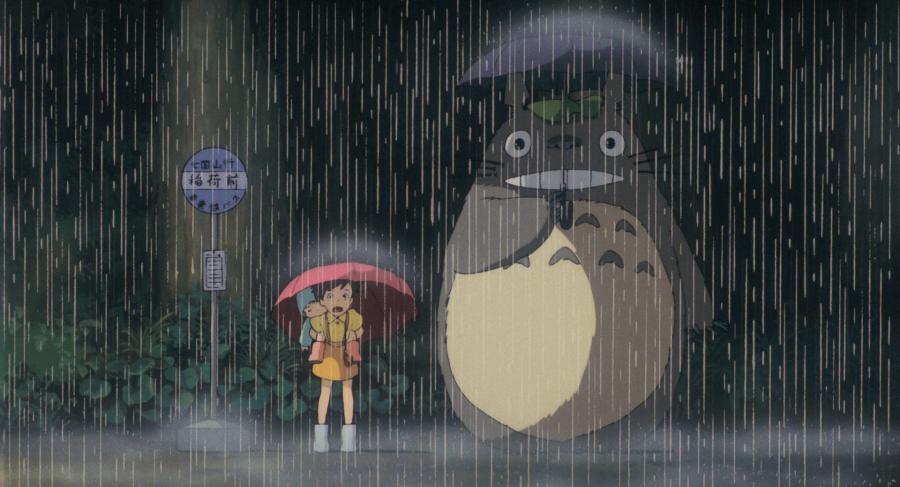
Figure 2: Screenshot of My Neighbor Totoro (1986) with Totoro right and protagonist Mei left. This scene where Mei waits on the bus, has the same silence as the train scene from Spirited Away.
In Nausicaä of the Valley of the Wind (1984), we find more harsh themes. This movie takes place in a post-apocalyptic world where a forest polluted by humans (fukai) brings toxic air into the atmosphere, so humans can only live near the seaside, where the wind keeps the air clean. The first minutes of the movie show protagonist Nausicaä, a young girl, exploring the polluted forest, while wearing a mask against the toxic gases. This reminds us of how Salmose (2018) described the apocalyptic sublime. The illustrations of the movie, the many details and colors of the forest, and the strange sounds and music gives us something we would call beauty. But the narrative of how humans polluted the forest and made it toxic, and how the war destroyed settlements evokes something almost unrepresentable, especially in combination with the beautiful anime style. The combination, however, gives us a sublime feeling.
Miyazaki’s movies are simplistic, maybe not always in the animation style, but looking from a cinematic perspective, one can say that in some scenes ‘less is more’.
Clearly, the movie has a combination of the action apocalyptic sublime and the poetic variant. Nausicaä has to save her village from evil armies and she is the only one who can stop them. Almost all the actions in the movie are focused on this. However, where Salmose (2018) describes how Hollywood movies use rapid camera movement and heavily edited footage, Miyazaki chooses a more poetic approach in his cinema style. Miyazaki’s scenes are slow and long, but full of details. In the prologue of the movie, we can see how flaming giants burn down cities. Later on, when the plot develops, you find out that this scene was what is called the Seven Days of Fire, the moment the world was destroyed and the forests became poisonous. It is then that you become aware of the complex and impactful narrative Miyazaki created.
But in Nausicaä, we also find the romantic sublime. Nature is everywhere in the movie and Nausicaä often is surrounded by overwhelming landscapes. We can see in Miyazaki’s movies that it is not nature itself that is sublime, but it is how humans relate and think about nature: “The natural and human worlds, therefore, share an almost sacred bond in Romantic thought, this relationship cited as the source of artistic inspiration” (Brendan, 2020). Miyazaki drew upon this, with elements of aesthetic, artistic, and philosophical interpretations. Brendan (2020) also points out how Miyazaki plays with femininity. Most of Miyazaki’s movies have a female protagonist, which goes against the Romantic and Burkean masculine sublime. Miyazaki clearly has a wider view on this. Beauty, in his movies, is neither female nor male as we can see in Howl’s Moving Castle (2004). In this movie, the protagonist is also a girl, who becomes old and ugly, while her savior is a selfish and beautiful man, who cares a lot about his appearance.
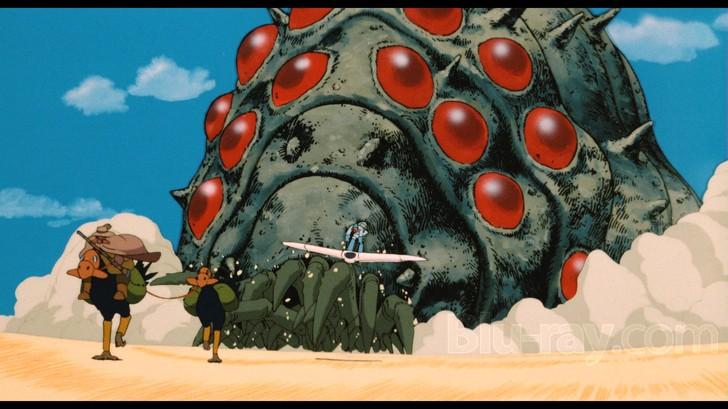
Figure 3: A screenshot of Nausicaä of the Valley of the Wind in which protagonist Nausicaä (on the small plane) flees from an Ohm, a kind of arthropod.
The natural sublime is something we often find in Japanese culture. In Japanese aesthetics, the word yūgen is something that could be closely linked to the sublime. Yūgen is used for poetics, and also for landscape painting (Parkes, 2018). It favors ‘allusiveness over explicitness and completeness.’ It has to do with the depth of the world we live in, experienced with our imagination. The word also gives us a way to look formalistically at an (art)work, for instance, Japanese calligraphy (figure 4). As we look at this work of Sesshū we vaguely can see a kind of tree, with something that looks like a mountain in the background. However, what we see in this, is totally personal, but what we all can see is how soft and gentle the brushstrokes have been applied. We only see one color, black, yet we see different tones of it, from light to dark. It gives a serene feeling, looking at this minimalist work of art. That same feeling we can get from Miyazaki’s movies. Although figure 5 shows a more realistic image, we clearly can see it is a train, it is just as mysterious as the work of Sesshū. This train scene from Spirited Away gives us nothing but something to enjoy, as stated earlier. But it leaves us with a lot of questions, where is the train going, who are the black shade passengers traveling along with Chihiro? Are they even shadows? Then again, we see the contrast between the soft background, the clouds, and the sky, almost looking like a background of a painting, while the characters are drawn in a vivid anime style with hard lines.
We cannot answer those questions, just as we cannot answer the question of what exactly we see in Sesshū’s work. It is yūgen.
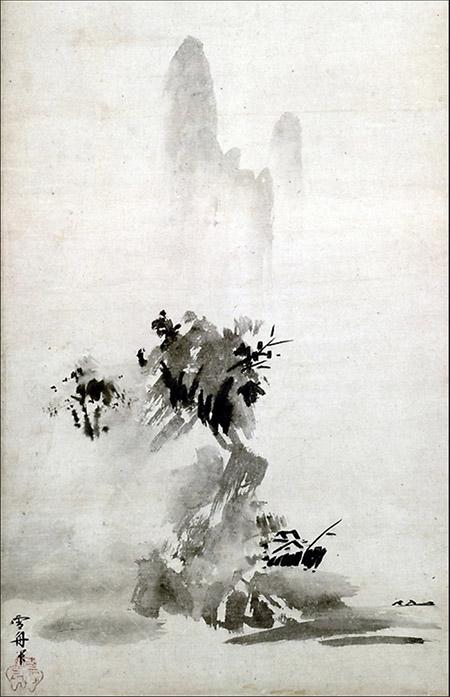
Figure 4: Splashed Ink Landscape (15th C.) by Sesshū.
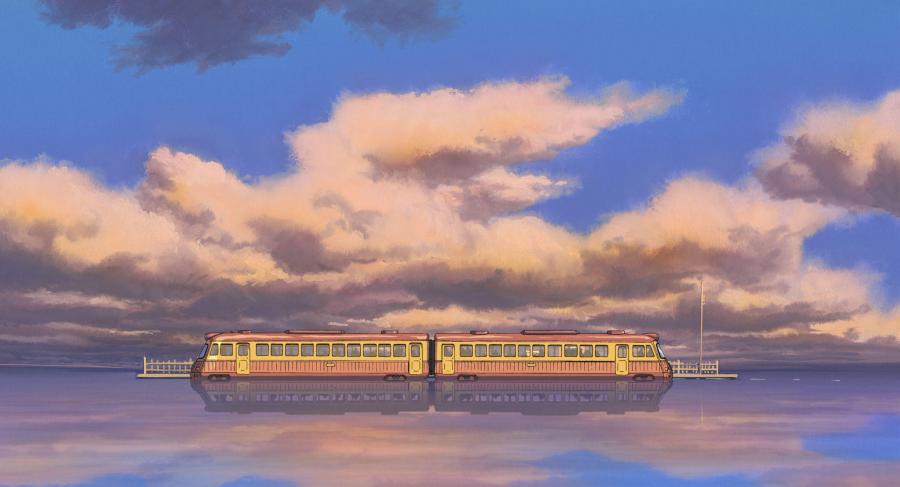
Figure 5: Screenshot of Spirited Away’s train scene. Where is the train going? Why is there a train?
The nature in Miyazaki’s movies can be both beautiful and devastating at the same time. When looking at Princess Mononoke, we can enjoy beautiful landscapes such as in figure 6 where we see the big forest, in which the story takes place, surrounded by little spirits. The forest is protected by a big (holy) spirit. Humans from the nearby village have chopped many trees to burn for their iron industry and this made the spirit angry, as we can see in figure 7. We cannot only link this to the previously mentioned apocalyptic sublime but also the Burkean sublime. Burke called the French Revolution in the 18th century an example of sublimity. He calls it a wonderful spectacle yet a mysterious work of art (Shaw, 2012). In Princes Mononoke we can find beauty in the forest, and in nature in general, and in the peace between humans and nature. Burke found beauty in law (Eagleton, 2005) as it is the opposite of chaos, and we find beauty in the law and order system of the human village in the movie. One strong (female) leader has the power in the village and everyone obeys her and has to work hard. However, in that same village, the workers are afraid of the leader, who has the authority, and they must work hard to please her. Then, when the village gets attacked by god creatures, a war breaks out and the beauty we found earlier makes place for a feeling of sublimity. Princess Mononoke is one of the very few movies of Miyazaki with a lot of death, blood, and fear. This makes us ask ethical questions, as also Burke did when looking at the French Revolution.
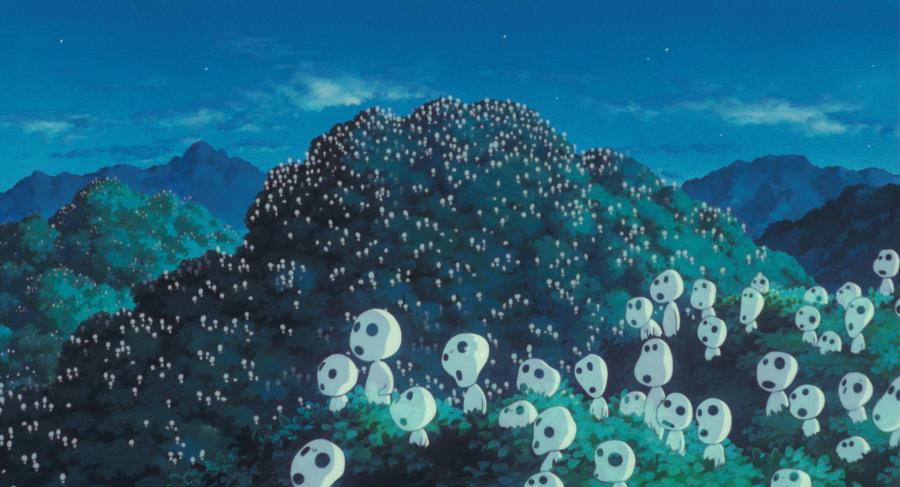
Figure 6: Screenshot of Princess Mononoke. The small spirits are called kodama and in Japanese folklore they live inside trees. Many kodama’s mean a healthy forest.
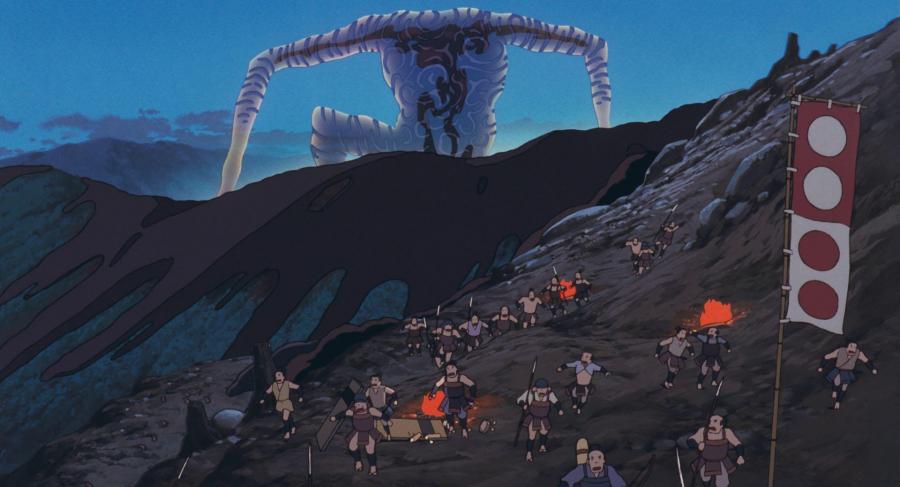
Figure 7: Screenshot of Princess Mononoke where the forest spirit turned into a giant god-looking being and fights against the humans who destroyed the forest.
Miyazaki's sublime
We have found different aspects of the sublime in Miyazaki’s work: the romantic sublime, the apocalyptic sublime, a formalistic sublime, and a Burkean sublime. Nature is an important theme in many of Miyazaki’s movies. In Miyazaki’s nature, we often find beauty in the image, but also in the narrative, and that is where we can see Miyazaki’s philosophy. He lets us think about the beauty in nature, but also about the danger of it, especially when humans consume or destroy nature. He links the different sublimes together.
Miyazaki’s movies are simplistic, maybe not always in the animation style, but looking from a cinematic perspective, one can say that in some scenes ‘less is more'. In contrast, sometimes we get overloaded with a lot of information, such as is in Spirited Away and in Princess Mononoke. Not only in the complex animation and the many details, but also the narratives can be complex and hard to follow.
However, Miyazaki knows how to combine a childish and beautiful easiness of filming and animation, with harsh, complex, and even fearful events and narratives. He makes us think about how we behave in a society, how we deal with nature, and how beautiful moments often have a touch of sublimity. In the opening scene of Nausicaä of the Valley of the Wind Nausicaä summarizes Miyazaki’s philosophy when she sits in the polluted and toxic forest, but she still sees the beauty of it: “So beautiful… though in this forest of death, your lungs would rot in five minutes without a mask.”
References:
Brendan C. Walsh (2020). A Modern-Day Romantic: The Romantic Sublime in Hayao Miyazaki’s Creative Philosophy, Comparative Literature: East & West.
Burke, E. (1747). A Philosophical Enquiry Into the Origin of Our Ideas of the Sublime and the Beautiful.
Eagleton, T. (2005). Holy Terror, Oxford.
Napier, S. J. (2005) Anime from Akira to Howl’s Moving Castle: Experiencing Contemporary Japanese Animation. New York: Palgrave.
Napier, S. J. (2018) Miyazakiworld: A Life in Art. New Haven: Yale UP.
Parkes, G. (2018, December 4). Japanese Aesthetics. On Standford University of Philosophy. Retrieved January 2021
Prettejohn, E. (2005). Beauty and Art, 1750-2000. Oxford University Press USA - OSO.
Salmose, N. (2018). The Apocaliptic Sublime: Anthropocene Representation and Environmental Agency in Hollywood Action-Adventure Cli-fi films, in The Journal of Popular Culture, 51 (6): 1415-1433.
Shaw, P. (2016). The Sublime. Routledge. ISBN 978-1-138-85964-7.
-All images used are owned by Studio Ghibli-